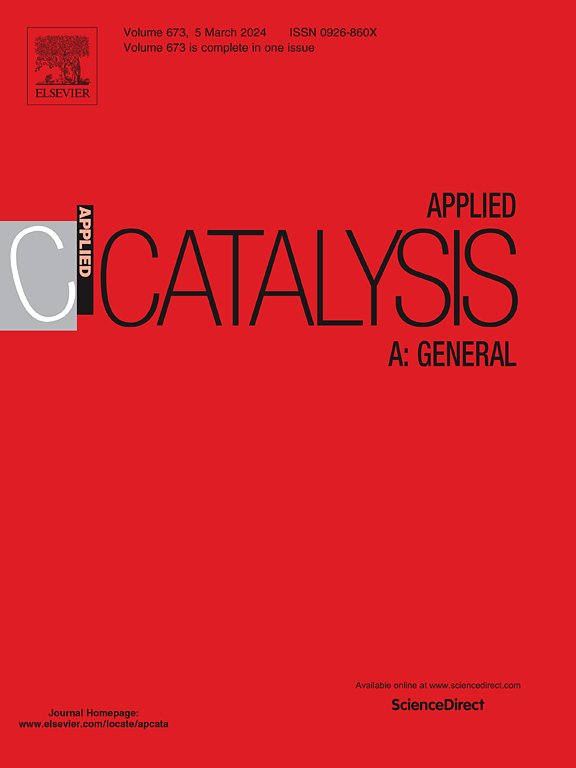nioh涂层BiVO4用于选择性甘油氧化:表面效应和ph -偏置电压协同作用
IF 4.7
2区 化学
Q2 CHEMISTRY, PHYSICAL
引用次数: 0
摘要
在本研究中,我们通过在BiVO4光阳极上引入非晶NiOOH助催化剂,显著提高了甘油氧化的PEC性能。研究了偏置电压和pH对甘油转化产物选择性的影响。研究表明,增加偏置电压可促进甘油氧化,当偏置电压为0.7 V时,甘油转化率和DHA选择性均显著提高,可达68 %。此外,pH对甘油氧化产物的选择性起着关键作用,中性至微碱性条件(pH=8)最有利于DHA的产生。本研究提供了一种有前景的可持续甘油增值策略,并提供了对NiOOH/BiVO4光阳极上PEC甘油氧化影响因素的全面了解。本文章由计算机程序翻译,如有差异,请以英文原文为准。
NiOOH-coated BiVO4 for selective glycerol oxidation: Surface effects and pH-Bias voltage synergy
In this study, we significantly improved the PEC performance of glycerol oxidation by introducing an amorphous NiOOH co-catalyst onto BiVO4 photoanodes. The effects of the bias voltage and pH on the selectivity of glycerol conversion products were meticulously investigated. The research demonstrated that increasing the bias voltage promoted glycerol oxidation, with an optimal voltage of 0.7 V leading to a significant increase in both the glycerol conversion rate and DHA selectivity, reaching up to 68 %. Additionally, pH played a critical role in the selectivity of glycerol oxidation products, with neutral to slightly alkaline conditions (pH=8) being the most conducive for DHA production. This study provides a promising strategy for sustainable glycerol valorization and offers a comprehensive understanding of the factors influencing PEC glycerol oxidation on NiOOH/BiVO4 photoanodes.
求助全文
通过发布文献求助,成功后即可免费获取论文全文。
去求助
来源期刊

Applied Catalysis A: General
化学-环境科学
CiteScore
9.00
自引率
5.50%
发文量
415
审稿时长
24 days
期刊介绍:
Applied Catalysis A: General publishes original papers on all aspects of catalysis of basic and practical interest to chemical scientists in both industrial and academic fields, with an emphasis onnew understanding of catalysts and catalytic reactions, new catalytic materials, new techniques, and new processes, especially those that have potential practical implications.
Papers that report results of a thorough study or optimization of systems or processes that are well understood, widely studied, or minor variations of known ones are discouraged. Authors should include statements in a separate section "Justification for Publication" of how the manuscript fits the scope of the journal in the cover letter to the editors. Submissions without such justification will be rejected without review.
 求助内容:
求助内容: 应助结果提醒方式:
应助结果提醒方式:


